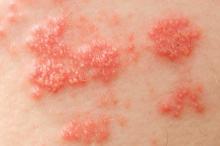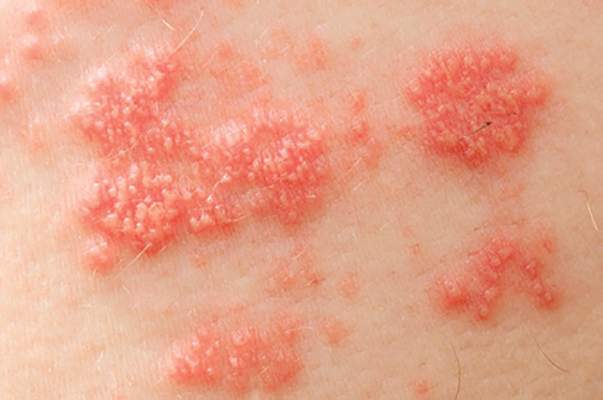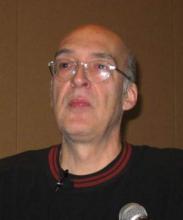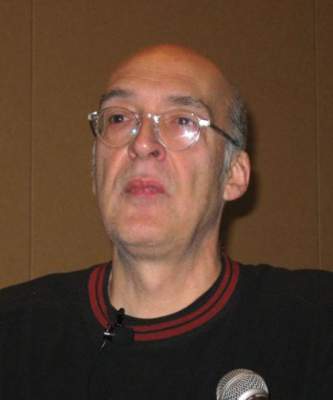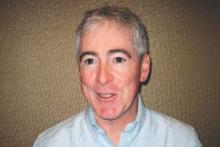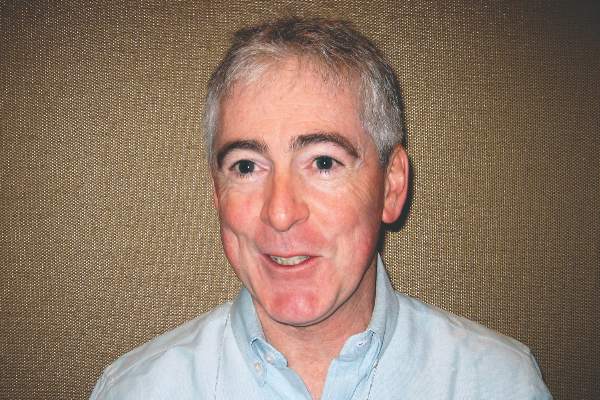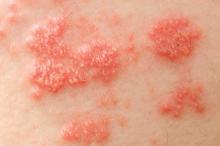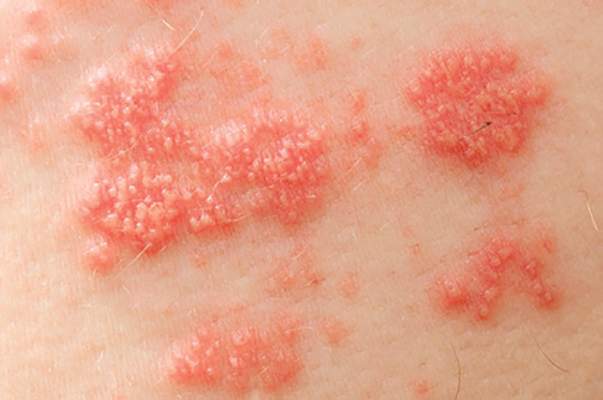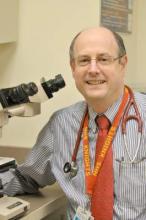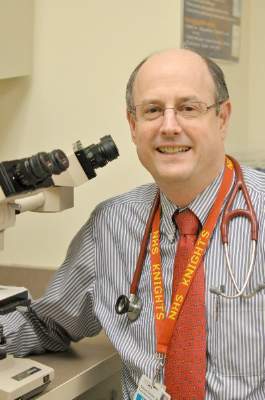User login
American College of Rheumatology (ACR): Annual Scientific Meeting
VIDEO: Cardiovascular deaths declining in rheumatoid arthritis patients
SAN FRANCISCO – Deaths from cardiovascular disease are declining in rheumatoid arthritis patients diagnosed after the year 2000, compared with previous decades, according to a new study presented at the annual meeting of the American College of Rheumatology.
The study researchers found significant improvement in the relative 10-year cardiovascular mortality rate, including coronary heart disease mortality, in people with RA in the years 2000-2007, compared with previous decades, explained lead investigator Dr. Elena Myasoedova, assistant professor of medicine at the Mayo Clinic, Rochester, Minn.,
In a video interview, Dr. Myasoedova talked about the trends identified in the study, which included 315 people who developed RA between 2000 and 2007, 498 people who developed RA in earlier years, and 813 people without RA.
Dr. Myasoedova had no relevant financial disclosures.
The video associated with this article is no longer available on this site. Please view all of our videos on the MDedge YouTube channel
SAN FRANCISCO – Deaths from cardiovascular disease are declining in rheumatoid arthritis patients diagnosed after the year 2000, compared with previous decades, according to a new study presented at the annual meeting of the American College of Rheumatology.
The study researchers found significant improvement in the relative 10-year cardiovascular mortality rate, including coronary heart disease mortality, in people with RA in the years 2000-2007, compared with previous decades, explained lead investigator Dr. Elena Myasoedova, assistant professor of medicine at the Mayo Clinic, Rochester, Minn.,
In a video interview, Dr. Myasoedova talked about the trends identified in the study, which included 315 people who developed RA between 2000 and 2007, 498 people who developed RA in earlier years, and 813 people without RA.
Dr. Myasoedova had no relevant financial disclosures.
The video associated with this article is no longer available on this site. Please view all of our videos on the MDedge YouTube channel
SAN FRANCISCO – Deaths from cardiovascular disease are declining in rheumatoid arthritis patients diagnosed after the year 2000, compared with previous decades, according to a new study presented at the annual meeting of the American College of Rheumatology.
The study researchers found significant improvement in the relative 10-year cardiovascular mortality rate, including coronary heart disease mortality, in people with RA in the years 2000-2007, compared with previous decades, explained lead investigator Dr. Elena Myasoedova, assistant professor of medicine at the Mayo Clinic, Rochester, Minn.,
In a video interview, Dr. Myasoedova talked about the trends identified in the study, which included 315 people who developed RA between 2000 and 2007, 498 people who developed RA in earlier years, and 813 people without RA.
Dr. Myasoedova had no relevant financial disclosures.
The video associated with this article is no longer available on this site. Please view all of our videos on the MDedge YouTube channel
AT THE ACR ANNUAL MEETING
VIDEO: Mortality gap is closing between rheumatoid arthritis patients, general population
SAN FRANCISCO – Mortality rates are declining in people with rheumatoid arthritis (RA) and more closely match those in the general population, according to a retrospective, population-based study reported at the annual meeting of the American College of Rheumatology.
The study did not identify why deaths from cardiovascular disease and cancer declined in people diagnosed with RA in the years 2001-2006, compared with those diagnosed between 1996 and 2000. But the findings suggest that the decline is related to earlier and more aggressive treatment of RA, as well as recognition of the importance of managing cardiovascular risk factors in patients with the disease.
In a video interview, the study’s lead investigator, Dr. Diane Lacaille, professor of rheumatology at the University of British Columbia, Vancouver, discussed the study findings and the implications for management of inflammation in both RA and cardiovascular disease.
Dr. Lacaille had no relevant financial disclosures to report.
The video associated with this article is no longer available on this site. Please view all of our videos on the MDedge YouTube channel
SAN FRANCISCO – Mortality rates are declining in people with rheumatoid arthritis (RA) and more closely match those in the general population, according to a retrospective, population-based study reported at the annual meeting of the American College of Rheumatology.
The study did not identify why deaths from cardiovascular disease and cancer declined in people diagnosed with RA in the years 2001-2006, compared with those diagnosed between 1996 and 2000. But the findings suggest that the decline is related to earlier and more aggressive treatment of RA, as well as recognition of the importance of managing cardiovascular risk factors in patients with the disease.
In a video interview, the study’s lead investigator, Dr. Diane Lacaille, professor of rheumatology at the University of British Columbia, Vancouver, discussed the study findings and the implications for management of inflammation in both RA and cardiovascular disease.
Dr. Lacaille had no relevant financial disclosures to report.
The video associated with this article is no longer available on this site. Please view all of our videos on the MDedge YouTube channel
SAN FRANCISCO – Mortality rates are declining in people with rheumatoid arthritis (RA) and more closely match those in the general population, according to a retrospective, population-based study reported at the annual meeting of the American College of Rheumatology.
The study did not identify why deaths from cardiovascular disease and cancer declined in people diagnosed with RA in the years 2001-2006, compared with those diagnosed between 1996 and 2000. But the findings suggest that the decline is related to earlier and more aggressive treatment of RA, as well as recognition of the importance of managing cardiovascular risk factors in patients with the disease.
In a video interview, the study’s lead investigator, Dr. Diane Lacaille, professor of rheumatology at the University of British Columbia, Vancouver, discussed the study findings and the implications for management of inflammation in both RA and cardiovascular disease.
Dr. Lacaille had no relevant financial disclosures to report.
The video associated with this article is no longer available on this site. Please view all of our videos on the MDedge YouTube channel
AT THE ACR ANNUAL MEETING
Shingles Vaccine Protection Lasted 5-6 Years in Autoimmune Disease Patients
Protection against shingles appeared to wane between the fifth and sixth years after patients with autoimmune diseases received the live herpes zoster vaccine, according to a large retrospective cohort study presented at the annual meeting of the American College of Rheumatology.
In contrast, shingles risk remained fairly constant among unvaccinated patients, reported Dr. Huifeng Yun, assistant professor of epidemiology at the University of Alabama, Birmingham. Based on the findings, clinicians could consider revaccinating patients with autoimmune diseases about 5 years after their first live herpes zoster vaccine, she said.
The long-term Shingles Prevention Study recently showed that the live herpes zoster vaccine is effective for about a decade among healthy older individuals, but the duration of protection for patients with autoimmune diseases was unclear, the investigators said. Therefore, they retrospectively studied Medicare data for more than 130,000 such patients between 2006 and 2012. About one-third of patients were vaccinated against herpes zoster, and 47% had rheumatoid arthritis, 32% had psoriasis, 21% had inflammatory bowel disease, 5% had psoriatic arthritis, and 1% had ankylosing spondylitis.
Rates of herpes zoster among vaccinated patients rose from 0.75 per 100 person-years during the first year after vaccination to 1.36 during the sixth year. In the adjusted analysis, vaccinated patients had about half the risk of herpes zoster, compared with unvaccinated patients, during year 1 (relative risk, 0.52; 95% confidence interval, 0.45-0.61) and remained substantially less likely to develop shingles until year 6, when the gap in risk between vaccinated and unvaccinated patients essentially closed (RR, 0.92; 95% CI, 0.45-1.86). There was no overall change in risk among unvaccinated patients during the study period, the investigators noted.
Dr. Yun disclosed a financial relationship with Amgen. The senior author and two coauthors also disclosed relationships with several pharmaceutical companies. Two investigators had no disclosures.
Protection against shingles appeared to wane between the fifth and sixth years after patients with autoimmune diseases received the live herpes zoster vaccine, according to a large retrospective cohort study presented at the annual meeting of the American College of Rheumatology.
In contrast, shingles risk remained fairly constant among unvaccinated patients, reported Dr. Huifeng Yun, assistant professor of epidemiology at the University of Alabama, Birmingham. Based on the findings, clinicians could consider revaccinating patients with autoimmune diseases about 5 years after their first live herpes zoster vaccine, she said.
The long-term Shingles Prevention Study recently showed that the live herpes zoster vaccine is effective for about a decade among healthy older individuals, but the duration of protection for patients with autoimmune diseases was unclear, the investigators said. Therefore, they retrospectively studied Medicare data for more than 130,000 such patients between 2006 and 2012. About one-third of patients were vaccinated against herpes zoster, and 47% had rheumatoid arthritis, 32% had psoriasis, 21% had inflammatory bowel disease, 5% had psoriatic arthritis, and 1% had ankylosing spondylitis.
Rates of herpes zoster among vaccinated patients rose from 0.75 per 100 person-years during the first year after vaccination to 1.36 during the sixth year. In the adjusted analysis, vaccinated patients had about half the risk of herpes zoster, compared with unvaccinated patients, during year 1 (relative risk, 0.52; 95% confidence interval, 0.45-0.61) and remained substantially less likely to develop shingles until year 6, when the gap in risk between vaccinated and unvaccinated patients essentially closed (RR, 0.92; 95% CI, 0.45-1.86). There was no overall change in risk among unvaccinated patients during the study period, the investigators noted.
Dr. Yun disclosed a financial relationship with Amgen. The senior author and two coauthors also disclosed relationships with several pharmaceutical companies. Two investigators had no disclosures.
Protection against shingles appeared to wane between the fifth and sixth years after patients with autoimmune diseases received the live herpes zoster vaccine, according to a large retrospective cohort study presented at the annual meeting of the American College of Rheumatology.
In contrast, shingles risk remained fairly constant among unvaccinated patients, reported Dr. Huifeng Yun, assistant professor of epidemiology at the University of Alabama, Birmingham. Based on the findings, clinicians could consider revaccinating patients with autoimmune diseases about 5 years after their first live herpes zoster vaccine, she said.
The long-term Shingles Prevention Study recently showed that the live herpes zoster vaccine is effective for about a decade among healthy older individuals, but the duration of protection for patients with autoimmune diseases was unclear, the investigators said. Therefore, they retrospectively studied Medicare data for more than 130,000 such patients between 2006 and 2012. About one-third of patients were vaccinated against herpes zoster, and 47% had rheumatoid arthritis, 32% had psoriasis, 21% had inflammatory bowel disease, 5% had psoriatic arthritis, and 1% had ankylosing spondylitis.
Rates of herpes zoster among vaccinated patients rose from 0.75 per 100 person-years during the first year after vaccination to 1.36 during the sixth year. In the adjusted analysis, vaccinated patients had about half the risk of herpes zoster, compared with unvaccinated patients, during year 1 (relative risk, 0.52; 95% confidence interval, 0.45-0.61) and remained substantially less likely to develop shingles until year 6, when the gap in risk between vaccinated and unvaccinated patients essentially closed (RR, 0.92; 95% CI, 0.45-1.86). There was no overall change in risk among unvaccinated patients during the study period, the investigators noted.
Dr. Yun disclosed a financial relationship with Amgen. The senior author and two coauthors also disclosed relationships with several pharmaceutical companies. Two investigators had no disclosures.
FROM THE ACR ANNUAL MEETING
Stroke risk rose in autoimmune disease patients after herpes zoster
Stroke risk was 50% higher in the month after patients with autoimmune diseases developed herpes zoster, compared with the next 2-6 years, according to Dr. Leonard H. Calabrese.
“These data provide urgency for developing strategies to reduce the risk of varicella zoster virus in vulnerable immunosuppressed patients,” said Dr. Calabrese of the department of rheumatic and immunologic diseases at the Cleveland Clinic.
Immunosuppressive therapies increase the frequency and complexity of herpes zoster, which is a known risk factor for stroke. To examine the temporal relationship between herpes zoster and stroke among immunosuppressed patients, Dr. Calabrese and his associates studied Medicare data for almost 51,000 patients with new-onset herpes zoster who also had physician-diagnosed ankylosing spondylitis, inflammatory bowel disease, psoriasis, psoriatic arthritis, or rheumatoid arthritis. The researchers excluded patients with a history of stroke.
In the multivariable analysis, stroke was 1.5 times more likely during the 6 months immediately after herpes zoster than in the 2-6 years after herpes zoster (95% confidence interval, 1.06-2.12). During this 6-month window, there were 9.8 strokes per 1,000 person-years, compared with 8.7 per 1,000 person-years in the 2-6 years after herpes zoster. Stroke risk also remained somewhat elevated during the entire year after herpes zoster (incidence rate ratio, 1.3; 95% CI, 1.05-1.61).
In general, stroke was more likely to occur among patients who were older, were receiving high-dose glucocorticoids, or had diabetes, hypertension, atrial fibrillation, or a history of transient ischemic attack, he said at the annual meeting of the American College of Rheumatology in San Francisco.
Dr. Calabrese disclosed relationships with Bristol-Myers Squibb, Crescendo, AbbVie, Genentech, Biogen, Pfizer, Sanofi-Aventis Pharmaceutical, and Johnson & Johnson. Two coauthors also disclosed relationships with several pharmaceutical companies. The other four coinvestigators had no disclosures.
Stroke risk was 50% higher in the month after patients with autoimmune diseases developed herpes zoster, compared with the next 2-6 years, according to Dr. Leonard H. Calabrese.
“These data provide urgency for developing strategies to reduce the risk of varicella zoster virus in vulnerable immunosuppressed patients,” said Dr. Calabrese of the department of rheumatic and immunologic diseases at the Cleveland Clinic.
Immunosuppressive therapies increase the frequency and complexity of herpes zoster, which is a known risk factor for stroke. To examine the temporal relationship between herpes zoster and stroke among immunosuppressed patients, Dr. Calabrese and his associates studied Medicare data for almost 51,000 patients with new-onset herpes zoster who also had physician-diagnosed ankylosing spondylitis, inflammatory bowel disease, psoriasis, psoriatic arthritis, or rheumatoid arthritis. The researchers excluded patients with a history of stroke.
In the multivariable analysis, stroke was 1.5 times more likely during the 6 months immediately after herpes zoster than in the 2-6 years after herpes zoster (95% confidence interval, 1.06-2.12). During this 6-month window, there were 9.8 strokes per 1,000 person-years, compared with 8.7 per 1,000 person-years in the 2-6 years after herpes zoster. Stroke risk also remained somewhat elevated during the entire year after herpes zoster (incidence rate ratio, 1.3; 95% CI, 1.05-1.61).
In general, stroke was more likely to occur among patients who were older, were receiving high-dose glucocorticoids, or had diabetes, hypertension, atrial fibrillation, or a history of transient ischemic attack, he said at the annual meeting of the American College of Rheumatology in San Francisco.
Dr. Calabrese disclosed relationships with Bristol-Myers Squibb, Crescendo, AbbVie, Genentech, Biogen, Pfizer, Sanofi-Aventis Pharmaceutical, and Johnson & Johnson. Two coauthors also disclosed relationships with several pharmaceutical companies. The other four coinvestigators had no disclosures.
Stroke risk was 50% higher in the month after patients with autoimmune diseases developed herpes zoster, compared with the next 2-6 years, according to Dr. Leonard H. Calabrese.
“These data provide urgency for developing strategies to reduce the risk of varicella zoster virus in vulnerable immunosuppressed patients,” said Dr. Calabrese of the department of rheumatic and immunologic diseases at the Cleveland Clinic.
Immunosuppressive therapies increase the frequency and complexity of herpes zoster, which is a known risk factor for stroke. To examine the temporal relationship between herpes zoster and stroke among immunosuppressed patients, Dr. Calabrese and his associates studied Medicare data for almost 51,000 patients with new-onset herpes zoster who also had physician-diagnosed ankylosing spondylitis, inflammatory bowel disease, psoriasis, psoriatic arthritis, or rheumatoid arthritis. The researchers excluded patients with a history of stroke.
In the multivariable analysis, stroke was 1.5 times more likely during the 6 months immediately after herpes zoster than in the 2-6 years after herpes zoster (95% confidence interval, 1.06-2.12). During this 6-month window, there were 9.8 strokes per 1,000 person-years, compared with 8.7 per 1,000 person-years in the 2-6 years after herpes zoster. Stroke risk also remained somewhat elevated during the entire year after herpes zoster (incidence rate ratio, 1.3; 95% CI, 1.05-1.61).
In general, stroke was more likely to occur among patients who were older, were receiving high-dose glucocorticoids, or had diabetes, hypertension, atrial fibrillation, or a history of transient ischemic attack, he said at the annual meeting of the American College of Rheumatology in San Francisco.
Dr. Calabrese disclosed relationships with Bristol-Myers Squibb, Crescendo, AbbVie, Genentech, Biogen, Pfizer, Sanofi-Aventis Pharmaceutical, and Johnson & Johnson. Two coauthors also disclosed relationships with several pharmaceutical companies. The other four coinvestigators had no disclosures.
FROM THE ACR ANNUAL MEETING
Key clinical point: Stroke risk increased by 50% in the month after patients with autoimmune diseases had an episode of herpes zoster.
Major finding: The risk of stroke was 50% higher in the 6 months immediately after incident herpes zoster than 2-6 years after herpes zoster (95% CI, 1.06- 2.12).
Data source: An analysis of Medicare data for 50,929 patients with autoimmune disease and incident herpes zoster between 2006 and 2012.
Disclosures: Dr. Calabrese disclosed relationships with Bristol-Myers Squibb, Crescendo, AbbVie, Genentech, Biogen, Pfizer, Sanofi-Aventis Pharmaceutical, and Johnson & Johnson. Two coauthors also disclosed relationships with several pharmaceutical companies. The other four coinvestigators had no disclosures.
ACR: No long-term benefit for knee OA steroid injections
Regular corticosteroid injections over 2 years were relatively safe for osteoarthritic knees in a trial from Tufts Medical Center in Boston, but they did not slow the progression of joint damage or improve patient outcomes.
The findings come at a time when the role of intra-articular steroid shots is up for debate. They are widely used for knee osteoarthritis (OA) in the hopes of reducing cartilage damage from synovitis, but there’s also concern that they might actually harm cartilage and periarticular bone.
The investigators, led by Dr. Timothy McAlindon, chief of rheumatology at Tufts Medical Center, sought to bring some data to the table. “Our objective was to test the potential for disease modification of synovitic knee OA by triamcinolone hexacetonide [THA] in a clinical trial with comprehensive measurement of effects on cartilage and subchondral bone using MRI and DXA [dual-energy x-ray absorptiometry],” they said.
The investigators randomized 140 patients with symptomatic knee OA (Kellgren-Lawrence grade 2 or 3) and synovitis on ultrasound to either 40 mg THA or saline knee injections every 3 months for 2 years. Randomization was blocked and stratified by gender and Kellgren-Lawrence grade. Patients had clinical assessments at each visit and annual MRIs and DXA knee and hip scans.
There were no significant between-group differences over the course of the study in mean changes on Western Ontario and McMaster Universities Arthritis Index pain (–2.2 for THA vs. –2.8 for placebo; P = .3) and function scores (–7.1 for THA vs. –9.2 for placebo; P = .4), and no differences in chair stand (–1.1 for THA vs. –1.6 for placebo; P = .8) or walk time tests (–0.5 for THA vs. –0.03 for placebo; P = .5).
There were no significant differences on MRI or DXA, except that the steroid group had greater cartilage loss and the placebo group greater progression of fibrillation.
“The greater rate of loss of cartilage thickness ... in the treated group was small in magnitude and of uncertain clinical significance,” said Dr. McAlindon.
The mean body mass index in the study was 31.2 kg/m2. Just over half the subjects were women, and about two-thirds were white. More than 90% of patients in both groups completed the study.
The work was funded by the National Institutes of Health. The investigators have no relevant disclosures.
Regular corticosteroid injections over 2 years were relatively safe for osteoarthritic knees in a trial from Tufts Medical Center in Boston, but they did not slow the progression of joint damage or improve patient outcomes.
The findings come at a time when the role of intra-articular steroid shots is up for debate. They are widely used for knee osteoarthritis (OA) in the hopes of reducing cartilage damage from synovitis, but there’s also concern that they might actually harm cartilage and periarticular bone.
The investigators, led by Dr. Timothy McAlindon, chief of rheumatology at Tufts Medical Center, sought to bring some data to the table. “Our objective was to test the potential for disease modification of synovitic knee OA by triamcinolone hexacetonide [THA] in a clinical trial with comprehensive measurement of effects on cartilage and subchondral bone using MRI and DXA [dual-energy x-ray absorptiometry],” they said.
The investigators randomized 140 patients with symptomatic knee OA (Kellgren-Lawrence grade 2 or 3) and synovitis on ultrasound to either 40 mg THA or saline knee injections every 3 months for 2 years. Randomization was blocked and stratified by gender and Kellgren-Lawrence grade. Patients had clinical assessments at each visit and annual MRIs and DXA knee and hip scans.
There were no significant between-group differences over the course of the study in mean changes on Western Ontario and McMaster Universities Arthritis Index pain (–2.2 for THA vs. –2.8 for placebo; P = .3) and function scores (–7.1 for THA vs. –9.2 for placebo; P = .4), and no differences in chair stand (–1.1 for THA vs. –1.6 for placebo; P = .8) or walk time tests (–0.5 for THA vs. –0.03 for placebo; P = .5).
There were no significant differences on MRI or DXA, except that the steroid group had greater cartilage loss and the placebo group greater progression of fibrillation.
“The greater rate of loss of cartilage thickness ... in the treated group was small in magnitude and of uncertain clinical significance,” said Dr. McAlindon.
The mean body mass index in the study was 31.2 kg/m2. Just over half the subjects were women, and about two-thirds were white. More than 90% of patients in both groups completed the study.
The work was funded by the National Institutes of Health. The investigators have no relevant disclosures.
Regular corticosteroid injections over 2 years were relatively safe for osteoarthritic knees in a trial from Tufts Medical Center in Boston, but they did not slow the progression of joint damage or improve patient outcomes.
The findings come at a time when the role of intra-articular steroid shots is up for debate. They are widely used for knee osteoarthritis (OA) in the hopes of reducing cartilage damage from synovitis, but there’s also concern that they might actually harm cartilage and periarticular bone.
The investigators, led by Dr. Timothy McAlindon, chief of rheumatology at Tufts Medical Center, sought to bring some data to the table. “Our objective was to test the potential for disease modification of synovitic knee OA by triamcinolone hexacetonide [THA] in a clinical trial with comprehensive measurement of effects on cartilage and subchondral bone using MRI and DXA [dual-energy x-ray absorptiometry],” they said.
The investigators randomized 140 patients with symptomatic knee OA (Kellgren-Lawrence grade 2 or 3) and synovitis on ultrasound to either 40 mg THA or saline knee injections every 3 months for 2 years. Randomization was blocked and stratified by gender and Kellgren-Lawrence grade. Patients had clinical assessments at each visit and annual MRIs and DXA knee and hip scans.
There were no significant between-group differences over the course of the study in mean changes on Western Ontario and McMaster Universities Arthritis Index pain (–2.2 for THA vs. –2.8 for placebo; P = .3) and function scores (–7.1 for THA vs. –9.2 for placebo; P = .4), and no differences in chair stand (–1.1 for THA vs. –1.6 for placebo; P = .8) or walk time tests (–0.5 for THA vs. –0.03 for placebo; P = .5).
There were no significant differences on MRI or DXA, except that the steroid group had greater cartilage loss and the placebo group greater progression of fibrillation.
“The greater rate of loss of cartilage thickness ... in the treated group was small in magnitude and of uncertain clinical significance,” said Dr. McAlindon.
The mean body mass index in the study was 31.2 kg/m2. Just over half the subjects were women, and about two-thirds were white. More than 90% of patients in both groups completed the study.
The work was funded by the National Institutes of Health. The investigators have no relevant disclosures.
FROM THE ACR ANNUAL MEETING
Key clinical point: Intra-articular steroid injections do not slow the progression of knee OA or improve patient outcomes.
Major finding: Over 2 years, there were no significant differences between steroid injection and placebo injection patients on Western Ontario and McMaster Universities Arthritis Index pain (–2.2 for THA vs. –2.8 for placebo; P = .3) and function scores (–7.1 for THA vs. –9.2 for placebo; P = .4), and no differences in chair stand (–1.1 for THA vs. –1.6 for placebo; P = .8) or walk time tests (–0.5 for THA vs. –0.03 for placebo; P = .5).
Data source: A randomized, placebo-controlled trial with 140 knee OA patients.
Disclosures: The work was funded by the National Institutes of Health. The investigators have no relevant disclosures.
Shingles vaccine protection lasted 5-6 years in autoimmune disease patients
Protection against shingles appeared to wane between the fifth and sixth years after patients with autoimmune diseases received the live herpes zoster vaccine, according to a large retrospective cohort study presented at the annual meeting of the American College of Rheumatology.
In contrast, shingles risk remained fairly constant among unvaccinated patients, reported Dr. Huifeng Yun, assistant professor of epidemiology at the University of Alabama, Birmingham. Based on the findings, clinicians could consider revaccinating patients with autoimmune diseases about 5 years after their first live herpes zoster vaccine, she said.*
The long-term Shingles Prevention Study recently showed that the live herpes zoster vaccine is effective for about a decade among healthy older individuals, but the duration of protection for patients with autoimmune diseases was unclear, the investigators said. Therefore, they retrospectively studied Medicare data for more than 130,000 such patients between 2006 and 2012. About one-third of patients were vaccinated against herpes zoster, and 47% had rheumatoid arthritis, 32% had psoriasis, 21% had inflammatory bowel disease, 5% had psoriatic arthritis, and 1% had ankylosing spondylitis.
Rates of herpes zoster among vaccinated patients rose from 0.75 per 100 person-years during the first year after vaccination to 1.36 during the sixth year. In the adjusted analysis, vaccinated patients had about half the risk of herpes zoster, compared with unvaccinated patients, during year 1 (relative risk, 0.52; 95% confidence interval, 0.45-0.61) and remained substantially less likely to develop shingles until year 6, when the gap in risk between vaccinated and unvaccinated patients essentially closed (RR, 0.92; 95% CI, 0.45-1.86). There was no overall change in risk among unvaccinated patients during the study period, the investigators noted.
Dr. Yun disclosed a financial relationship with Amgen. The senior author and two coauthors also disclosed relationships with several pharmaceutical companies. Two investigators had no disclosures.
* Correction, 11/13/2015: The article previously misstated Dr. Yun's gender.
Protection against shingles appeared to wane between the fifth and sixth years after patients with autoimmune diseases received the live herpes zoster vaccine, according to a large retrospective cohort study presented at the annual meeting of the American College of Rheumatology.
In contrast, shingles risk remained fairly constant among unvaccinated patients, reported Dr. Huifeng Yun, assistant professor of epidemiology at the University of Alabama, Birmingham. Based on the findings, clinicians could consider revaccinating patients with autoimmune diseases about 5 years after their first live herpes zoster vaccine, she said.*
The long-term Shingles Prevention Study recently showed that the live herpes zoster vaccine is effective for about a decade among healthy older individuals, but the duration of protection for patients with autoimmune diseases was unclear, the investigators said. Therefore, they retrospectively studied Medicare data for more than 130,000 such patients between 2006 and 2012. About one-third of patients were vaccinated against herpes zoster, and 47% had rheumatoid arthritis, 32% had psoriasis, 21% had inflammatory bowel disease, 5% had psoriatic arthritis, and 1% had ankylosing spondylitis.
Rates of herpes zoster among vaccinated patients rose from 0.75 per 100 person-years during the first year after vaccination to 1.36 during the sixth year. In the adjusted analysis, vaccinated patients had about half the risk of herpes zoster, compared with unvaccinated patients, during year 1 (relative risk, 0.52; 95% confidence interval, 0.45-0.61) and remained substantially less likely to develop shingles until year 6, when the gap in risk between vaccinated and unvaccinated patients essentially closed (RR, 0.92; 95% CI, 0.45-1.86). There was no overall change in risk among unvaccinated patients during the study period, the investigators noted.
Dr. Yun disclosed a financial relationship with Amgen. The senior author and two coauthors also disclosed relationships with several pharmaceutical companies. Two investigators had no disclosures.
* Correction, 11/13/2015: The article previously misstated Dr. Yun's gender.
Protection against shingles appeared to wane between the fifth and sixth years after patients with autoimmune diseases received the live herpes zoster vaccine, according to a large retrospective cohort study presented at the annual meeting of the American College of Rheumatology.
In contrast, shingles risk remained fairly constant among unvaccinated patients, reported Dr. Huifeng Yun, assistant professor of epidemiology at the University of Alabama, Birmingham. Based on the findings, clinicians could consider revaccinating patients with autoimmune diseases about 5 years after their first live herpes zoster vaccine, she said.*
The long-term Shingles Prevention Study recently showed that the live herpes zoster vaccine is effective for about a decade among healthy older individuals, but the duration of protection for patients with autoimmune diseases was unclear, the investigators said. Therefore, they retrospectively studied Medicare data for more than 130,000 such patients between 2006 and 2012. About one-third of patients were vaccinated against herpes zoster, and 47% had rheumatoid arthritis, 32% had psoriasis, 21% had inflammatory bowel disease, 5% had psoriatic arthritis, and 1% had ankylosing spondylitis.
Rates of herpes zoster among vaccinated patients rose from 0.75 per 100 person-years during the first year after vaccination to 1.36 during the sixth year. In the adjusted analysis, vaccinated patients had about half the risk of herpes zoster, compared with unvaccinated patients, during year 1 (relative risk, 0.52; 95% confidence interval, 0.45-0.61) and remained substantially less likely to develop shingles until year 6, when the gap in risk between vaccinated and unvaccinated patients essentially closed (RR, 0.92; 95% CI, 0.45-1.86). There was no overall change in risk among unvaccinated patients during the study period, the investigators noted.
Dr. Yun disclosed a financial relationship with Amgen. The senior author and two coauthors also disclosed relationships with several pharmaceutical companies. Two investigators had no disclosures.
* Correction, 11/13/2015: The article previously misstated Dr. Yun's gender.
FROM THE ACR ANNUAL MEETING
Key clinical point: Protection against shingles appeared to wane between the fifth and sixth years after patients with autoimmune diseases received the live herpes zoster vaccine.
Major finding: The rate of herpes zoster rose from 0.75 per 100 person-years in the first year after vaccination to 1.36 in the sixth year, when it approached the rate among unvaccinated patients.
Data source: Retrospective analysis of 130,107 Medicare patients with autoimmune diseases between 2006 and 2012.
Disclosures: Dr. Yun disclosed a financial relationship with Amgen. The senior author and two coauthors also disclosed relationships with several pharmaceutical companies. Two investigators had no disclosures.
Whet your appetite: ACR 2015 loads a full plate of pediatric rheumatology
As rheumatologists gather in San Francisco this week for the annual meeting of the American College of Rheumatology Nov. 6-11, those who see pediatric patients will have a chance to sharpen their skills and broaden their knowledge base by attending some of the many sessions geared specifically for them.
Here’s a day-by-day look at highlights of what’s on the menu for pediatric rheumatologists:
Sunday, Nov. 8
8:30-10:00 a.m. Clots in Children: Where They Come From and What to Do With Them. Attendees will learn all about antiphospholipid antibodies and lupus anticoagulants in children; how and when to perform diagnostic imaging of patients with central nervous system vasculopathy; and how to decide if, when, and how to treat these conditions.
2:30-4:00 p.m. Pediatric Rheumatology: Clinical and Therapeutic Aspects I – Juvenile Idiopathic Arthritis. This abstract session on JIA features studies about cancer risk; increased risk of infection and other adverse events when one or more biologics are added to methotrexate; findings from a double-blind, placebo-controlled trial of probiotics on enthesitis related disease; the relevance of the duration of inactive disease when determining when to withdraw methotrexate; results from the Childhood Arthritis and Rheumatology Research Alliance’s Systemic JIA Consensus Treatment Plans pilot study; and the efficacy of canakinumab in patients with systemic JIA previously treated with biologics.
4:30-6:00 p.m. Pediatric Lupus Transitional Care: An Interactive Experience. Three speakers will share the different perspectives of the emerging-adult, young-adult, and adolescent patients on their transition experiences through multimedia.
Monday, Nov. 9
8:30-10:00 a.m. Nuts and Bolts of Macrophage Activation Syndrome. Learn more about recognizing, diagnosing, and treating the condition – even in adult patients – by applying new diagnostic criteria in patients with and without ongoing biologic therapy and knowing when and how to use targeted anticytokine therapy.
2:30-4:00 p.m. Pediatric Rheumatology: Clinical and Therapeutic Aspects II – Pediatric Systemic Lupus Erythematosus. The six studies presented in this abstract session cover a wide range of topics in juvenile SLE, including a systematic classification of the subtypes of pancreatitis in childhood-onset SLE; the sensitivity and specificity of cell-bound complement activation products in the differential diagnosis of childhood-onset lupus; axonal dysfunction’s relationship with neuropsychiatric manifestations and disease activity; risk factors for morbidity and long-term outcome of infants with cardiac neonatal lupus; cross-validating an automated cognitive performance test that screens for neurocognitive problems; and assessing the effects of vitamin D supplementation on bone microarchitecture.
Tuesday, Nov. 10
6:15-7:30 a.m. Childhood Arthritis & Rheumatology Research Alliance (CARRA). The organization is having a membership breakfast meeting at the San Francisco Marriott Marquis.
9:00-10:00 a.m. Pediatric Rheumatology Year in Review and Awards. This session provides a succinct update on what is newest and most important in basic science, translational, and clinical research in pediatric rheumatology in the past year.
11:00 a.m.-12:00 p.m. Controversies in Kawasaki Disease: Implications for Long-Term Outcomes. This session will inform attendees of how progress made in understanding the pathogenesis of Kawasaki disease has assisted researchers in finding novel biomarkers and treatment to improve long-term outcomes.
4:30-6:00 p.m. Pediatric Rheumatology: Clinical and Therapeutic Aspects IV – Imaging and Novel Clinical Interventions. This session contains abstract presentations on new MRI methods for detecting progression of erosion in JIA by focusing on bony depressions and for assessing whole-body disease damage in juvenile dermatomyositis, as well as a brain biopsy study of the histopathology and defining characteristics of patients with childhood primary small vessel CNS vasculitis. Another three studies of JIA patients examine the efficacy of tocilizumab in a small case series of patients with refractory uveitis, a pilot study of mesenchymal stromal cell treatment, how often patients meet the varying clinical definitions of inactive disease or minimal disease activity.
Wednesday, Nov. 11
7:30-8:30 a.m. New Adult and Juvenile Myositis Response Criteria. Learn how to apply the new response criteria in both clinical and research settings in this session. The new criteria use cut points to define minimal, moderate, and major levels of treatment response and are based on absolute changes in the measurements of improvement, rather than relative changes.
9:00-10:30 a.m. Chronic Nonbacterial Osteomyelitis (CNO): From the Bedside to the Bench. Presenters will offer a broad overview of the clinical features and management of this sterile, inflammatory bone disorder of unknown etiology, as well as growing knowledge of the genetics of the disease. Evidence will be presented that suggests the microbiome may play a role in the clinical manifestations of the disease.
As rheumatologists gather in San Francisco this week for the annual meeting of the American College of Rheumatology Nov. 6-11, those who see pediatric patients will have a chance to sharpen their skills and broaden their knowledge base by attending some of the many sessions geared specifically for them.
Here’s a day-by-day look at highlights of what’s on the menu for pediatric rheumatologists:
Sunday, Nov. 8
8:30-10:00 a.m. Clots in Children: Where They Come From and What to Do With Them. Attendees will learn all about antiphospholipid antibodies and lupus anticoagulants in children; how and when to perform diagnostic imaging of patients with central nervous system vasculopathy; and how to decide if, when, and how to treat these conditions.
2:30-4:00 p.m. Pediatric Rheumatology: Clinical and Therapeutic Aspects I – Juvenile Idiopathic Arthritis. This abstract session on JIA features studies about cancer risk; increased risk of infection and other adverse events when one or more biologics are added to methotrexate; findings from a double-blind, placebo-controlled trial of probiotics on enthesitis related disease; the relevance of the duration of inactive disease when determining when to withdraw methotrexate; results from the Childhood Arthritis and Rheumatology Research Alliance’s Systemic JIA Consensus Treatment Plans pilot study; and the efficacy of canakinumab in patients with systemic JIA previously treated with biologics.
4:30-6:00 p.m. Pediatric Lupus Transitional Care: An Interactive Experience. Three speakers will share the different perspectives of the emerging-adult, young-adult, and adolescent patients on their transition experiences through multimedia.
Monday, Nov. 9
8:30-10:00 a.m. Nuts and Bolts of Macrophage Activation Syndrome. Learn more about recognizing, diagnosing, and treating the condition – even in adult patients – by applying new diagnostic criteria in patients with and without ongoing biologic therapy and knowing when and how to use targeted anticytokine therapy.
2:30-4:00 p.m. Pediatric Rheumatology: Clinical and Therapeutic Aspects II – Pediatric Systemic Lupus Erythematosus. The six studies presented in this abstract session cover a wide range of topics in juvenile SLE, including a systematic classification of the subtypes of pancreatitis in childhood-onset SLE; the sensitivity and specificity of cell-bound complement activation products in the differential diagnosis of childhood-onset lupus; axonal dysfunction’s relationship with neuropsychiatric manifestations and disease activity; risk factors for morbidity and long-term outcome of infants with cardiac neonatal lupus; cross-validating an automated cognitive performance test that screens for neurocognitive problems; and assessing the effects of vitamin D supplementation on bone microarchitecture.
Tuesday, Nov. 10
6:15-7:30 a.m. Childhood Arthritis & Rheumatology Research Alliance (CARRA). The organization is having a membership breakfast meeting at the San Francisco Marriott Marquis.
9:00-10:00 a.m. Pediatric Rheumatology Year in Review and Awards. This session provides a succinct update on what is newest and most important in basic science, translational, and clinical research in pediatric rheumatology in the past year.
11:00 a.m.-12:00 p.m. Controversies in Kawasaki Disease: Implications for Long-Term Outcomes. This session will inform attendees of how progress made in understanding the pathogenesis of Kawasaki disease has assisted researchers in finding novel biomarkers and treatment to improve long-term outcomes.
4:30-6:00 p.m. Pediatric Rheumatology: Clinical and Therapeutic Aspects IV – Imaging and Novel Clinical Interventions. This session contains abstract presentations on new MRI methods for detecting progression of erosion in JIA by focusing on bony depressions and for assessing whole-body disease damage in juvenile dermatomyositis, as well as a brain biopsy study of the histopathology and defining characteristics of patients with childhood primary small vessel CNS vasculitis. Another three studies of JIA patients examine the efficacy of tocilizumab in a small case series of patients with refractory uveitis, a pilot study of mesenchymal stromal cell treatment, how often patients meet the varying clinical definitions of inactive disease or minimal disease activity.
Wednesday, Nov. 11
7:30-8:30 a.m. New Adult and Juvenile Myositis Response Criteria. Learn how to apply the new response criteria in both clinical and research settings in this session. The new criteria use cut points to define minimal, moderate, and major levels of treatment response and are based on absolute changes in the measurements of improvement, rather than relative changes.
9:00-10:30 a.m. Chronic Nonbacterial Osteomyelitis (CNO): From the Bedside to the Bench. Presenters will offer a broad overview of the clinical features and management of this sterile, inflammatory bone disorder of unknown etiology, as well as growing knowledge of the genetics of the disease. Evidence will be presented that suggests the microbiome may play a role in the clinical manifestations of the disease.
As rheumatologists gather in San Francisco this week for the annual meeting of the American College of Rheumatology Nov. 6-11, those who see pediatric patients will have a chance to sharpen their skills and broaden their knowledge base by attending some of the many sessions geared specifically for them.
Here’s a day-by-day look at highlights of what’s on the menu for pediatric rheumatologists:
Sunday, Nov. 8
8:30-10:00 a.m. Clots in Children: Where They Come From and What to Do With Them. Attendees will learn all about antiphospholipid antibodies and lupus anticoagulants in children; how and when to perform diagnostic imaging of patients with central nervous system vasculopathy; and how to decide if, when, and how to treat these conditions.
2:30-4:00 p.m. Pediatric Rheumatology: Clinical and Therapeutic Aspects I – Juvenile Idiopathic Arthritis. This abstract session on JIA features studies about cancer risk; increased risk of infection and other adverse events when one or more biologics are added to methotrexate; findings from a double-blind, placebo-controlled trial of probiotics on enthesitis related disease; the relevance of the duration of inactive disease when determining when to withdraw methotrexate; results from the Childhood Arthritis and Rheumatology Research Alliance’s Systemic JIA Consensus Treatment Plans pilot study; and the efficacy of canakinumab in patients with systemic JIA previously treated with biologics.
4:30-6:00 p.m. Pediatric Lupus Transitional Care: An Interactive Experience. Three speakers will share the different perspectives of the emerging-adult, young-adult, and adolescent patients on their transition experiences through multimedia.
Monday, Nov. 9
8:30-10:00 a.m. Nuts and Bolts of Macrophage Activation Syndrome. Learn more about recognizing, diagnosing, and treating the condition – even in adult patients – by applying new diagnostic criteria in patients with and without ongoing biologic therapy and knowing when and how to use targeted anticytokine therapy.
2:30-4:00 p.m. Pediatric Rheumatology: Clinical and Therapeutic Aspects II – Pediatric Systemic Lupus Erythematosus. The six studies presented in this abstract session cover a wide range of topics in juvenile SLE, including a systematic classification of the subtypes of pancreatitis in childhood-onset SLE; the sensitivity and specificity of cell-bound complement activation products in the differential diagnosis of childhood-onset lupus; axonal dysfunction’s relationship with neuropsychiatric manifestations and disease activity; risk factors for morbidity and long-term outcome of infants with cardiac neonatal lupus; cross-validating an automated cognitive performance test that screens for neurocognitive problems; and assessing the effects of vitamin D supplementation on bone microarchitecture.
Tuesday, Nov. 10
6:15-7:30 a.m. Childhood Arthritis & Rheumatology Research Alliance (CARRA). The organization is having a membership breakfast meeting at the San Francisco Marriott Marquis.
9:00-10:00 a.m. Pediatric Rheumatology Year in Review and Awards. This session provides a succinct update on what is newest and most important in basic science, translational, and clinical research in pediatric rheumatology in the past year.
11:00 a.m.-12:00 p.m. Controversies in Kawasaki Disease: Implications for Long-Term Outcomes. This session will inform attendees of how progress made in understanding the pathogenesis of Kawasaki disease has assisted researchers in finding novel biomarkers and treatment to improve long-term outcomes.
4:30-6:00 p.m. Pediatric Rheumatology: Clinical and Therapeutic Aspects IV – Imaging and Novel Clinical Interventions. This session contains abstract presentations on new MRI methods for detecting progression of erosion in JIA by focusing on bony depressions and for assessing whole-body disease damage in juvenile dermatomyositis, as well as a brain biopsy study of the histopathology and defining characteristics of patients with childhood primary small vessel CNS vasculitis. Another three studies of JIA patients examine the efficacy of tocilizumab in a small case series of patients with refractory uveitis, a pilot study of mesenchymal stromal cell treatment, how often patients meet the varying clinical definitions of inactive disease or minimal disease activity.
Wednesday, Nov. 11
7:30-8:30 a.m. New Adult and Juvenile Myositis Response Criteria. Learn how to apply the new response criteria in both clinical and research settings in this session. The new criteria use cut points to define minimal, moderate, and major levels of treatment response and are based on absolute changes in the measurements of improvement, rather than relative changes.
9:00-10:30 a.m. Chronic Nonbacterial Osteomyelitis (CNO): From the Bedside to the Bench. Presenters will offer a broad overview of the clinical features and management of this sterile, inflammatory bone disorder of unknown etiology, as well as growing knowledge of the genetics of the disease. Evidence will be presented that suggests the microbiome may play a role in the clinical manifestations of the disease.
No stone left unturned in ACR 2015 clinical sessions
If you haven’t dealt with a chikungunya patient yet, you probably will soon.
The mosquito-borne virus, long considered a tropical disease, is on the upswing in the United States, carried back especially by vacationers returning from the Caribbean. It causes an inflammatory arthritis that’s hard to recognize and treat.
“We’ve actually even had some here in Seattle,” said Dr. Gregory Gardner, a rheumatologist at the University of Washington, Seattle.
So a session this year at the annual meeting of the American College of Rheumatology, “Coming to a Joint Near You: Chikungunya” on Sunday, Nov. 8, at 8:30 a.m., is probably one that attendees won’t want to miss, said Dr. Gardner, one of the many planners of this year’s meeting.
The session will cover chikungunya immunopathology, clinical manifestations, and treatment – just about all you need to know to handle a case. The chikungunya session is just one example of the meeting’s timely, on-point clinical information. Another one that’s likely to be popular is “Maintenance Therapy in ANCA-Associated Vasculitis: Evaluation and Treatment of Patients in Remission,” on Monday, Nov. 9, at 7:30 a.m., and “The Great Debate: Long-Term, Low-Dose Corticosteroid Use in the Treatment of Rheumatoid Arthritis” on Sunday at 2:30 p.m. While some worry about the long-term side effects of steroids in rheumatoid arthritis, others think the approach is safe and possibly even disease modifying, Dr. Gardner said.
The clinical sessions will be complimented by a full slate of original science. “We’ve had more abstracts submitted this year than to any other previous meeting,” over 4,000. “There’s great research being presented,” said Dr. Victoria Shanmugam, a Washington, D.C., rheumatologist and also a planner of this year’s meeting.
Getting into the late-breaking abstract session on Tuesday, Nov. 10, at 4:30 p.m. “was incredibly competitive this year,” she said. Just a handful of the 70 submissions made it. Investigators who did will share their latest findings on tocilizumab for giant cell arteritis; baricitinib versus placebo or adalimumab for rheumatoid arthritis; adalimumab with methotrexate for uveitis in juvenile idiopathic arthritis; epratuzumab in moderate to severe systemic lupus; tofacitinib in ankylosing spondylitis; and interleukin-17a inhibition in active ankylosing spondylitis.
There’ll also be a strong show of original research in the plenary sessions at 11 a.m. Sunday, Monday, and Tuesday. Studies in Tuesday’s session, for instance, include investigations into the pharmacogenetics of allopurinol in gout and the role of anakinra in recurrent pericarditis.
Results from the Scleroderma Lung Study II, which pitted oral cyclophosphamide against mycophenolate mofetil for interstitial lung disease in systemic sclerosis, will be revealed Sunday at 4:30 p.m. in the “Systemic Sclerosis, Fibrosing Syndromes, and Raynaud’s – Clinical Aspects and Therapeutics I” session. Until now, there haven’t been strong prospective data to support the use of mycophenolate in scleroderma lung disease. “There will be a lot of interest in this. People have been waiting for these results to come out,” Dr. Shanmugam said.
Planners have done something new this year by bringing fertility and pregnancy research into its own dedicated abstract session, “Reproductive Issues in Rheumatic Disorders: Basic and Clinical Aspects,” on Monday at 4:30 p.m.
It’s recognition of the central role those issues play in rheumatology. Fertility and pregnancy are a “major clinical challenge we face in daily practice. Our diseases often present during pregnancy, and we tend to have diseases that affect young women. Patients have a lot of questions,” Dr. Shanmugam said.
The abstract session will be a mix of basic and clinical research across a range of rheumatic conditions. The hope is to break down the silos in rheumatology to foster collaboration and move the field forward, she said.
That session will be complemented by “Reproductive Issues in Rheumatology” on Wednesday at 11:00 a.m. – focusing on biologics in pregnancy and pregnancy outcomes in rheumatoid arthritis – as well as “Pregnancy and Infertility in Rheumatic Disease” on Monday at 2:30 p.m.
Macrophage activation is getting its share of attention, too, especially in adults, for instance during the “Nuts and Bolts of Macrophage Activation Syndrome” session on Monday at 8:30 a.m.
“Historically, it’s mainly been studied in children. We wanted to focus on bringing this into adult rheumatology. I think this is going to be a very good session,” Dr. Shanmugam said.
If you haven’t dealt with a chikungunya patient yet, you probably will soon.
The mosquito-borne virus, long considered a tropical disease, is on the upswing in the United States, carried back especially by vacationers returning from the Caribbean. It causes an inflammatory arthritis that’s hard to recognize and treat.
“We’ve actually even had some here in Seattle,” said Dr. Gregory Gardner, a rheumatologist at the University of Washington, Seattle.
So a session this year at the annual meeting of the American College of Rheumatology, “Coming to a Joint Near You: Chikungunya” on Sunday, Nov. 8, at 8:30 a.m., is probably one that attendees won’t want to miss, said Dr. Gardner, one of the many planners of this year’s meeting.
The session will cover chikungunya immunopathology, clinical manifestations, and treatment – just about all you need to know to handle a case. The chikungunya session is just one example of the meeting’s timely, on-point clinical information. Another one that’s likely to be popular is “Maintenance Therapy in ANCA-Associated Vasculitis: Evaluation and Treatment of Patients in Remission,” on Monday, Nov. 9, at 7:30 a.m., and “The Great Debate: Long-Term, Low-Dose Corticosteroid Use in the Treatment of Rheumatoid Arthritis” on Sunday at 2:30 p.m. While some worry about the long-term side effects of steroids in rheumatoid arthritis, others think the approach is safe and possibly even disease modifying, Dr. Gardner said.
The clinical sessions will be complimented by a full slate of original science. “We’ve had more abstracts submitted this year than to any other previous meeting,” over 4,000. “There’s great research being presented,” said Dr. Victoria Shanmugam, a Washington, D.C., rheumatologist and also a planner of this year’s meeting.
Getting into the late-breaking abstract session on Tuesday, Nov. 10, at 4:30 p.m. “was incredibly competitive this year,” she said. Just a handful of the 70 submissions made it. Investigators who did will share their latest findings on tocilizumab for giant cell arteritis; baricitinib versus placebo or adalimumab for rheumatoid arthritis; adalimumab with methotrexate for uveitis in juvenile idiopathic arthritis; epratuzumab in moderate to severe systemic lupus; tofacitinib in ankylosing spondylitis; and interleukin-17a inhibition in active ankylosing spondylitis.
There’ll also be a strong show of original research in the plenary sessions at 11 a.m. Sunday, Monday, and Tuesday. Studies in Tuesday’s session, for instance, include investigations into the pharmacogenetics of allopurinol in gout and the role of anakinra in recurrent pericarditis.
Results from the Scleroderma Lung Study II, which pitted oral cyclophosphamide against mycophenolate mofetil for interstitial lung disease in systemic sclerosis, will be revealed Sunday at 4:30 p.m. in the “Systemic Sclerosis, Fibrosing Syndromes, and Raynaud’s – Clinical Aspects and Therapeutics I” session. Until now, there haven’t been strong prospective data to support the use of mycophenolate in scleroderma lung disease. “There will be a lot of interest in this. People have been waiting for these results to come out,” Dr. Shanmugam said.
Planners have done something new this year by bringing fertility and pregnancy research into its own dedicated abstract session, “Reproductive Issues in Rheumatic Disorders: Basic and Clinical Aspects,” on Monday at 4:30 p.m.
It’s recognition of the central role those issues play in rheumatology. Fertility and pregnancy are a “major clinical challenge we face in daily practice. Our diseases often present during pregnancy, and we tend to have diseases that affect young women. Patients have a lot of questions,” Dr. Shanmugam said.
The abstract session will be a mix of basic and clinical research across a range of rheumatic conditions. The hope is to break down the silos in rheumatology to foster collaboration and move the field forward, she said.
That session will be complemented by “Reproductive Issues in Rheumatology” on Wednesday at 11:00 a.m. – focusing on biologics in pregnancy and pregnancy outcomes in rheumatoid arthritis – as well as “Pregnancy and Infertility in Rheumatic Disease” on Monday at 2:30 p.m.
Macrophage activation is getting its share of attention, too, especially in adults, for instance during the “Nuts and Bolts of Macrophage Activation Syndrome” session on Monday at 8:30 a.m.
“Historically, it’s mainly been studied in children. We wanted to focus on bringing this into adult rheumatology. I think this is going to be a very good session,” Dr. Shanmugam said.
If you haven’t dealt with a chikungunya patient yet, you probably will soon.
The mosquito-borne virus, long considered a tropical disease, is on the upswing in the United States, carried back especially by vacationers returning from the Caribbean. It causes an inflammatory arthritis that’s hard to recognize and treat.
“We’ve actually even had some here in Seattle,” said Dr. Gregory Gardner, a rheumatologist at the University of Washington, Seattle.
So a session this year at the annual meeting of the American College of Rheumatology, “Coming to a Joint Near You: Chikungunya” on Sunday, Nov. 8, at 8:30 a.m., is probably one that attendees won’t want to miss, said Dr. Gardner, one of the many planners of this year’s meeting.
The session will cover chikungunya immunopathology, clinical manifestations, and treatment – just about all you need to know to handle a case. The chikungunya session is just one example of the meeting’s timely, on-point clinical information. Another one that’s likely to be popular is “Maintenance Therapy in ANCA-Associated Vasculitis: Evaluation and Treatment of Patients in Remission,” on Monday, Nov. 9, at 7:30 a.m., and “The Great Debate: Long-Term, Low-Dose Corticosteroid Use in the Treatment of Rheumatoid Arthritis” on Sunday at 2:30 p.m. While some worry about the long-term side effects of steroids in rheumatoid arthritis, others think the approach is safe and possibly even disease modifying, Dr. Gardner said.
The clinical sessions will be complimented by a full slate of original science. “We’ve had more abstracts submitted this year than to any other previous meeting,” over 4,000. “There’s great research being presented,” said Dr. Victoria Shanmugam, a Washington, D.C., rheumatologist and also a planner of this year’s meeting.
Getting into the late-breaking abstract session on Tuesday, Nov. 10, at 4:30 p.m. “was incredibly competitive this year,” she said. Just a handful of the 70 submissions made it. Investigators who did will share their latest findings on tocilizumab for giant cell arteritis; baricitinib versus placebo or adalimumab for rheumatoid arthritis; adalimumab with methotrexate for uveitis in juvenile idiopathic arthritis; epratuzumab in moderate to severe systemic lupus; tofacitinib in ankylosing spondylitis; and interleukin-17a inhibition in active ankylosing spondylitis.
There’ll also be a strong show of original research in the plenary sessions at 11 a.m. Sunday, Monday, and Tuesday. Studies in Tuesday’s session, for instance, include investigations into the pharmacogenetics of allopurinol in gout and the role of anakinra in recurrent pericarditis.
Results from the Scleroderma Lung Study II, which pitted oral cyclophosphamide against mycophenolate mofetil for interstitial lung disease in systemic sclerosis, will be revealed Sunday at 4:30 p.m. in the “Systemic Sclerosis, Fibrosing Syndromes, and Raynaud’s – Clinical Aspects and Therapeutics I” session. Until now, there haven’t been strong prospective data to support the use of mycophenolate in scleroderma lung disease. “There will be a lot of interest in this. People have been waiting for these results to come out,” Dr. Shanmugam said.
Planners have done something new this year by bringing fertility and pregnancy research into its own dedicated abstract session, “Reproductive Issues in Rheumatic Disorders: Basic and Clinical Aspects,” on Monday at 4:30 p.m.
It’s recognition of the central role those issues play in rheumatology. Fertility and pregnancy are a “major clinical challenge we face in daily practice. Our diseases often present during pregnancy, and we tend to have diseases that affect young women. Patients have a lot of questions,” Dr. Shanmugam said.
The abstract session will be a mix of basic and clinical research across a range of rheumatic conditions. The hope is to break down the silos in rheumatology to foster collaboration and move the field forward, she said.
That session will be complemented by “Reproductive Issues in Rheumatology” on Wednesday at 11:00 a.m. – focusing on biologics in pregnancy and pregnancy outcomes in rheumatoid arthritis – as well as “Pregnancy and Infertility in Rheumatic Disease” on Monday at 2:30 p.m.
Macrophage activation is getting its share of attention, too, especially in adults, for instance during the “Nuts and Bolts of Macrophage Activation Syndrome” session on Monday at 8:30 a.m.
“Historically, it’s mainly been studied in children. We wanted to focus on bringing this into adult rheumatology. I think this is going to be a very good session,” Dr. Shanmugam said.
FROM THE ACR ANNUAL MEETING
Challenges, advocacy the focus of ACR sessions on business and administration
Biosimilars are coming, and they are going to have an impact on the practice of rheumatology.
But there’s no need to worry. Sessions at this year’s American College of Rheumatology annual meeting will bring attendees up to date about what they need to know to stay ahead of the issue. Biosimilars are just one of a slew of topics to be presented this year to help rheumatologists keep their practices strong with the latest information on regulatory issues, practice management, electronic health records, coding, business models, and other matters.
A major issue with biosimilars is whether pharmacists will be able to substitute them for familiar brand name biologics, and whether they’ll have to notify rheumatologists when they do so. It’s an extension of the generic switch issue, only more fraught because there’s a greater gap between branded biologics and their biosimilar counterparts than between traditional small-molecule drugs and their generics.
States regulate pharmacy practice, and it’s unclear how they’ll come down on the issue. Even so, the biosimilar industry is already at work in statehouses laying the groundwork to allow for easy swaps in the pharmacy.
“Biosimilars in Rheumatology,” a clinical science presentation on Sunday, Nov. 8, at 4:30 p.m., will let rheumatologists know what biosimilar rollouts “might look like in their own states, and what to watch out for. A lot of what will happen is likely to be determined at the state level,” said Dr. Colin Edgerton, a rheumatologist in North Charleston, S.C., and one of the many planners of this year’s meeting.
The session will also go into the experience in Europe, where biosimilar infliximab is one of several biosimilars already on the market, touching upon efficacy, safety, European regulatory solutions, and other matters.
The biosimilar talks dovetail nicely with a Monday, Nov. 9, session at 1:00 p.m. entitled “An Hour Well Spent: Successful Stories of Members Enhancing Patient Care Through State Advocacy.”
There’s a real push in rheumatology “to affect practice management at the state level. The point of this session is to bring together people who have been successful at the state level in forging relationships with decision makers. Those people will educate us on how practicing rheumatologist can impact the state legislature to get things done,” for instance by limiting troublesome insurance company policies such as step therapy and working towards uniform prescription authorization forms. Such issues are better addressed at the state level because things are too much of a patchwork in the United States to be sorted out at the federal level, Dr. Edgerton said.
Meanwhile, “Practice Without Walls,” a Monday session at 4:30 p.m., will explain how independent rheumatology practices can pool resources to improve quality of care and reduce costs, even across town or state divides. It’s one way to stay independent at a time of increasing consolidation.
The goal is to “allow integration without necessarily selling your practice to an established hospital group that has no particular interest in rheumatology. There are a lot of details to doing that; this will be an opportunity to learn from people who have done it successfully, so you don’t have to reinvent the wheel,” said Dr. Edgerton, one of the moderators for the session.
Biosimilars are coming, and they are going to have an impact on the practice of rheumatology.
But there’s no need to worry. Sessions at this year’s American College of Rheumatology annual meeting will bring attendees up to date about what they need to know to stay ahead of the issue. Biosimilars are just one of a slew of topics to be presented this year to help rheumatologists keep their practices strong with the latest information on regulatory issues, practice management, electronic health records, coding, business models, and other matters.
A major issue with biosimilars is whether pharmacists will be able to substitute them for familiar brand name biologics, and whether they’ll have to notify rheumatologists when they do so. It’s an extension of the generic switch issue, only more fraught because there’s a greater gap between branded biologics and their biosimilar counterparts than between traditional small-molecule drugs and their generics.
States regulate pharmacy practice, and it’s unclear how they’ll come down on the issue. Even so, the biosimilar industry is already at work in statehouses laying the groundwork to allow for easy swaps in the pharmacy.
“Biosimilars in Rheumatology,” a clinical science presentation on Sunday, Nov. 8, at 4:30 p.m., will let rheumatologists know what biosimilar rollouts “might look like in their own states, and what to watch out for. A lot of what will happen is likely to be determined at the state level,” said Dr. Colin Edgerton, a rheumatologist in North Charleston, S.C., and one of the many planners of this year’s meeting.
The session will also go into the experience in Europe, where biosimilar infliximab is one of several biosimilars already on the market, touching upon efficacy, safety, European regulatory solutions, and other matters.
The biosimilar talks dovetail nicely with a Monday, Nov. 9, session at 1:00 p.m. entitled “An Hour Well Spent: Successful Stories of Members Enhancing Patient Care Through State Advocacy.”
There’s a real push in rheumatology “to affect practice management at the state level. The point of this session is to bring together people who have been successful at the state level in forging relationships with decision makers. Those people will educate us on how practicing rheumatologist can impact the state legislature to get things done,” for instance by limiting troublesome insurance company policies such as step therapy and working towards uniform prescription authorization forms. Such issues are better addressed at the state level because things are too much of a patchwork in the United States to be sorted out at the federal level, Dr. Edgerton said.
Meanwhile, “Practice Without Walls,” a Monday session at 4:30 p.m., will explain how independent rheumatology practices can pool resources to improve quality of care and reduce costs, even across town or state divides. It’s one way to stay independent at a time of increasing consolidation.
The goal is to “allow integration without necessarily selling your practice to an established hospital group that has no particular interest in rheumatology. There are a lot of details to doing that; this will be an opportunity to learn from people who have done it successfully, so you don’t have to reinvent the wheel,” said Dr. Edgerton, one of the moderators for the session.
Biosimilars are coming, and they are going to have an impact on the practice of rheumatology.
But there’s no need to worry. Sessions at this year’s American College of Rheumatology annual meeting will bring attendees up to date about what they need to know to stay ahead of the issue. Biosimilars are just one of a slew of topics to be presented this year to help rheumatologists keep their practices strong with the latest information on regulatory issues, practice management, electronic health records, coding, business models, and other matters.
A major issue with biosimilars is whether pharmacists will be able to substitute them for familiar brand name biologics, and whether they’ll have to notify rheumatologists when they do so. It’s an extension of the generic switch issue, only more fraught because there’s a greater gap between branded biologics and their biosimilar counterparts than between traditional small-molecule drugs and their generics.
States regulate pharmacy practice, and it’s unclear how they’ll come down on the issue. Even so, the biosimilar industry is already at work in statehouses laying the groundwork to allow for easy swaps in the pharmacy.
“Biosimilars in Rheumatology,” a clinical science presentation on Sunday, Nov. 8, at 4:30 p.m., will let rheumatologists know what biosimilar rollouts “might look like in their own states, and what to watch out for. A lot of what will happen is likely to be determined at the state level,” said Dr. Colin Edgerton, a rheumatologist in North Charleston, S.C., and one of the many planners of this year’s meeting.
The session will also go into the experience in Europe, where biosimilar infliximab is one of several biosimilars already on the market, touching upon efficacy, safety, European regulatory solutions, and other matters.
The biosimilar talks dovetail nicely with a Monday, Nov. 9, session at 1:00 p.m. entitled “An Hour Well Spent: Successful Stories of Members Enhancing Patient Care Through State Advocacy.”
There’s a real push in rheumatology “to affect practice management at the state level. The point of this session is to bring together people who have been successful at the state level in forging relationships with decision makers. Those people will educate us on how practicing rheumatologist can impact the state legislature to get things done,” for instance by limiting troublesome insurance company policies such as step therapy and working towards uniform prescription authorization forms. Such issues are better addressed at the state level because things are too much of a patchwork in the United States to be sorted out at the federal level, Dr. Edgerton said.
Meanwhile, “Practice Without Walls,” a Monday session at 4:30 p.m., will explain how independent rheumatology practices can pool resources to improve quality of care and reduce costs, even across town or state divides. It’s one way to stay independent at a time of increasing consolidation.
The goal is to “allow integration without necessarily selling your practice to an established hospital group that has no particular interest in rheumatology. There are a lot of details to doing that; this will be an opportunity to learn from people who have done it successfully, so you don’t have to reinvent the wheel,” said Dr. Edgerton, one of the moderators for the session.
FROM THE ACR ANNUAL MEETING


